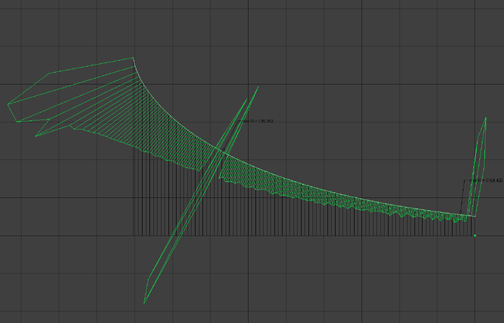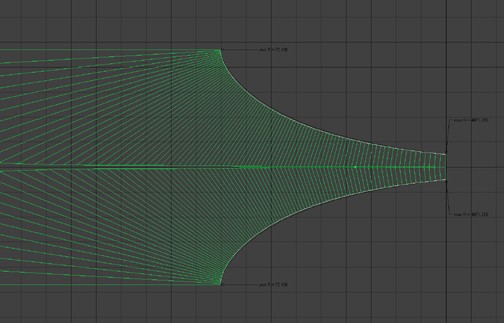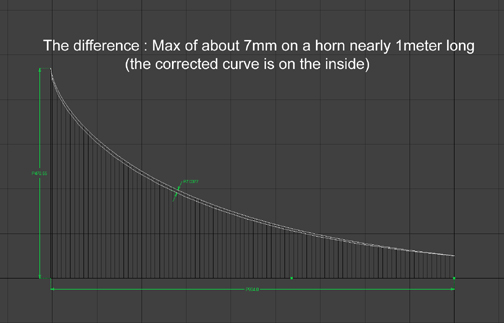Hello BE,
Quotes from BE in blue :
A tractrix and a exponential horn was compared in a AES paper sometime 1950-1970, I dont remember when exactly.
Does anyone know where I might get a look at this paper?
The two round and straight horns where made with the same theoretical cut off frequency, something like 100Hz, they had the same mouth and throat diameter, hence the exponential horn was somewhat longer.
The measurements was made under open sky on a roof top.
The results in the low frequencies towards the cutt off was clearly in favor of the exponential horn, it had a rather smooth and civilized roll off, while the tractrix was rather uneven and ragged, the usefull range was extended maybe a octave lower.
Well the decision would be simple if it were clear that this extended range did not cost anything in terms of distrotion above roll off.
Tractrix is nice, but it is only a reasonable connection between one space angel and a small area and 180 degrees and another larger area, the theoretical basis is based on geometry and some charming but faulty asumptions on wave propagation.
A much more sound shape is the oblate spheroid horn invented by Earl Geddes.
I have not read his book, and in fact I didn't know of him until now...
Here is a photo of Mr. Geddes
(looks like an interesting chap!) :

In reading his resumé it seems (unfortunately for us) that he has turned his interest toward home theater and development of compressed file formats.
It is actually possible to get comercial horns with something I think is an near oblate spheroid shape and a nice 180 degree termination at German ebay under the name ”Jabo”
The price is really reasonable.
The manufacturer ironically calls them ”Kugelwellenhorner” witch is German lingo for Tractrix horn.
Sounds like a marketing decision : Probably easier to sell a "tractrix" horn.
Though I call my horns tractrix, they are actually not 100% tractrix.
The software I use to generate the numbers results in a tractrix curve... However (and I have mentioned it once before), the resulting curve does not please my geometric evaluation tools when evaluated in terms of continuity of evolution, (using a program designed to evaluate the geometric continuity of the evolution of curves) that is to say, it does not evolve or accelerate in a completely continuous manner (do not confuse continuous with constant). It is clear where the curve should be, and it requires a relatively small adjustment to get there.

Above : The raw tractrix curve as specified by the horn calculation
software (97 points in 1cm increments) under evaluation for
"curvature continuity"
There is a problem (an inversion) in the throat
A wobble mid way
And a problem at the mouth (not a complete 180°)

Above : The same curve after adjustment

Above : The difference is subtle, but it does exist
Yes, I am probably wasting my time in correcting the curves, but I do it anyway, and I still call them tractrix horns.
Regarding the shape of dazzies horn: I can only see a decorative reson to make it round, I dont believe that round is better than rectangular in this range, in fact a rectangular shape will make a much better coupling to the room boundaries possible and extend the useful range 1-2 octaves lower, depending if dazzie can place it against a floor (or ceiling) and a wall.
Can't really do this.... I only have one corner.
By a second notion:
A quarter of a round horn would probably be ideal, it would fitt in the junction between the wall and the floor, and maintain the round shapes double curved better resonance control when compared to the parallel single corved sufaces of a rectangel.
Again, I would need a second corner.
Anyway, thanks very much BE for your thoughts,
jd*